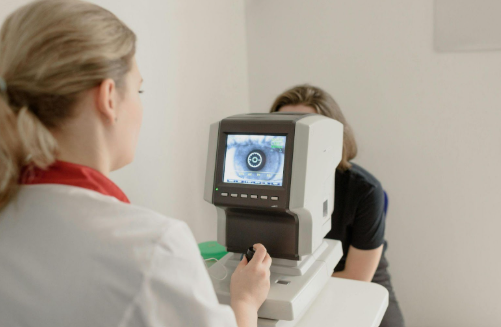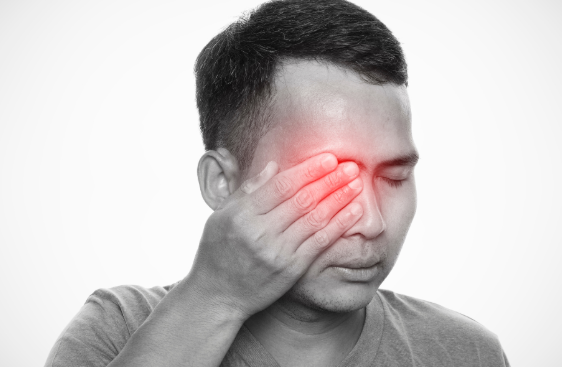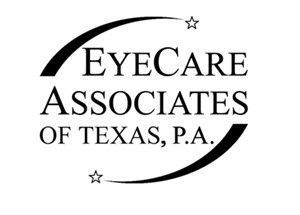Article
Dry Eyes in Autumn: Causes and Effective Remedies
As the seasons shift and autumn sets in, many people begin to notice subtle changes in their health—ranging from seasonal allergies to dry, irritated skin. One commonly overlooked condition that tends to worsen during this time of year is dry eye syndrome. While it may seem like a minor discomfort, dry eyes can significantly affect your quality of life, causing visual disturbances, irritation, and even long-term complications if left untreated. Understanding why autumn is particularly harsh on the eyes and learning how to manage the symptoms can help maintain clear, comfortable vision throughout the season.
Why Are Dry Eyes More Common in Autumn?
Dry eyes are common in autumn due to:
The Role of Decreased Humidity and Cooler Air
Autumn brings with it a dramatic change in the environment, most notably in temperature and humidity levels. As the air becomes cooler, it also tends to hold less moisture. Indoor heating systems, which begin to kick in during fall, further dehydrate the air in your living and working spaces. This drop in ambient humidity creates the perfect conditions for tear film evaporation, leading to the sensation of dryness, stinging, or burning in the eyes.
Unlike summer, when sweat and oil production is high and humidity helps keep the eye surface moist, autumn strips away that natural support system. Without sufficient moisture in the air, the tear film evaporates more quickly, and the eyes struggle to maintain proper lubrication.
Increased Exposure to Wind and Outdoor Irritants
Autumn breezes, though refreshing, can also exacerbate dry eye symptoms. Wind can directly evaporate the thin tear layer that protects the eye’s surface, resulting in irritation, redness, and a gritty sensation. Additionally, this season often sees an uptick in airborne allergens like mold spores, dust, and decaying leaves—all of which can worsen inflammation and discomfort in those who are predisposed to eye sensitivity.
People who engage in outdoor activities like hiking, apple picking, or seasonal yard work are especially vulnerable, as exposure to environmental irritants becomes unavoidable.
Understanding the Tear Film and Its Importance
The tear film is a delicate, three-layered structure that protects and lubricates the surface of the eye. It consists of an outer oily layer, a middle watery layer, and an inner mucin layer. Each layer has a unique function, and together they maintain optical clarity, flush out debris, and prevent infection.
When any one of these layers is compromised—due to environmental factors or underlying conditions—the result is an unstable tear film that evaporates too quickly or fails to provide adequate coverage.
The cold, dry air of autumn tends to affect the aqueous (watery) layer most significantly, causing it to evaporate faster than usual. If the meibomian glands in your eyelids are not producing enough oil to create a stable outer layer, the tear film loses its protective barrier, and dryness quickly sets in. This often leads to a vicious cycle: dryness triggers inflammation, which further impairs tear production and worsens symptoms.
Common Symptoms of Dry Eye Syndrome in Autumn
Dry eye syndrome can manifest in several ways, some of which may be surprising. The most common symptoms include a persistent dry, scratchy, or burning sensation in the eyes. Redness, excessive tearing (a reflex response to dryness), blurred vision, and a sensation of having something in your eye are also frequently reported.
In autumn, many people confuse these symptoms with seasonal allergies or eye fatigue. However, if your discomfort persists despite avoiding allergens or getting adequate rest, it could point to dry eyes exacerbated by environmental changes.
Effective Remedies for Managing Dry Eyes in Autumn
Here are some effective remedies for managing dry eyes in autumn:
Artificial Tears and Lubricating Drops
One of the first lines of defense against dry eye symptoms is the use of over-the-counter artificial tears. These drops are designed to supplement the natural tear film, providing temporary relief from dryness and irritation. However, not all drops are created equal. Preservative-free formulas are generally recommended for frequent use, as preservatives can further irritate sensitive eyes over time.
In autumn, when dry air is constantly affecting tear stability, using lubricating drops two to four times daily—or as needed—can significantly reduce discomfort and improve visual clarity.
Hydrating Your Environment
Another effective way to combat dry eye symptoms in the fall is by improving the humidity in your indoor spaces. Central heating systems tend to dry out the air, and running them without a humidifier can be detrimental to eye health. Investing in a quality humidifier and placing it in frequently used rooms like bedrooms or offices can help maintain moisture levels in the air, preventing your tear film from evaporating too quickly.
In addition, avoid sitting directly in front of heat sources or fans, and consider using protective eyewear like wraparound glasses when venturing outdoors on windy days.
Warm Compresses and Eyelid Hygiene
For individuals whose dry eye symptoms are related to meibomian gland dysfunction—a common condition where oil glands become blocked—using warm compresses can be incredibly beneficial. Applying a warm, moist cloth over closed eyelids for 10–15 minutes helps to liquefy the oil in these glands and promote better tear film stability.
Following this with gentle eyelid scrubbing using diluted baby shampoo or commercial eyelid cleansers can further help reduce inflammation and remove debris, allowing the glands to function properly.
Staying Hydrated and Adjusting Your Diet
Staying hydrated from within is just as important as protecting your eyes from external dryness. Drinking at least 8–10 glasses of water a day ensures that your body, including your tear glands, has sufficient moisture to function efficiently.
Incorporating omega-3 fatty acids into your diet—through foods like salmon, walnuts, and flaxseed—can also improve the quality of your tears and reduce inflammation associated with dry eye syndrome. Supplements may be recommended by your healthcare provider if dietary changes alone are insufficient.
When to See a Doctor for Persistent Dry Eyes
If your symptoms persist despite environmental adjustments and over-the-counter treatments, it’s essential to consult an eye care professional. Chronic dry eye can sometimes be a symptom of an underlying medical condition such as Sjögren's syndrome, rheumatoid arthritis, or thyroid dysfunction.
A comprehensive eye exam can help identify the root cause of your symptoms and determine whether prescription medications, punctal plugs (to block tear drainage), or in-office treatments like intense pulsed light therapy (IPL) are necessary.
Untreated dry eye can lead to serious complications over time. Chronic dryness increases your risk of corneal abrasions, infections, and in some cases, scarring that can permanently affect your vision. Seeing an eye doctor ensures that the condition is managed before it reaches this stage.
Preventing Dry Eyes Before They Start
Knowing that autumn is a high-risk season for dry eye flare-ups allows you to take proactive measures before symptoms begin. Start using lubricating drops early in the season, keep a humidifier running as soon as you switch on the heat, and maintain good eyelid hygiene consistently. This preventive approach can make the transition into cooler weather more comfortable and preserve your eye health year-round.
Even if you don’t currently suffer from dry eye symptoms,
scheduling regular eye exams is a good way to catch early signs of ocular surface disease. Your eye care provider can assess the quality and quantity of your tears and offer tailored recommendations for maintaining healthy vision through the seasons.
If dry, irritated eyes are interfering with your daily life this autumn, don’t wait to seek expert care. At
Eyecare Associates of Texas, P.A.,, our experienced team provides comprehensive eye evaluations and personalized treatment plans to help you manage dry eye symptoms effectively. From advanced diagnostics to the latest in-office therapies, we’re committed to restoring your comfort and protecting your vision year-round.
Visit us or call us at
(972) 637-1300 to help you see—and feel—better this season.





